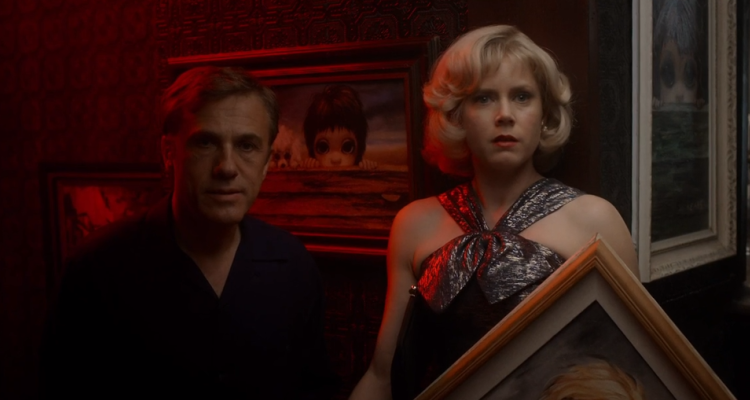 (2.5 / 5)
(2.5 / 5)
As a brand name director, there are certain things with associate with Tim Burton; a certain quaint creepiness and kooky charm.
More so than these things, however, Burton is known for his coterie: Big Eyes is his first live-action film since 1996 not to feature Johnny Depp or Helena Bonham Carter, though composer Danny Elfman is still hanging on in there. By the same criteria, it’s also Burton’s best film since Sweeney Todd back in 2007, but given the intervening two – Alice in Wonderland and Dark Shadows – perhaps that’s not saying particularly much.
The story goes as following: Margaret Ulbrich (Amy Adams) leaves the superficially idyllic suburbs, and her husband. Timid and naive, no sooner has she arrived in San Francisco than she’s swept off her feet by a charming fellow painter, Walter Keane (Christoph Waltz), who seduces her with appreciation and stories of Paris.
Quickly married, and looking to establish themselves, their artwork – his landscapes and her doe-eyed naifs – hang on the wall of a popular nightclub, near the toilets. By some miracle, however, Margaret’s paintings become a hit and Walter steps in to take the credit.
Big Eyes focuses on the period between which the fraud began and the time of its unmasking, with Margaret’s slander suit against Walter in 1970. While Walter uses his genius for self-publicity to become a cause célèbre and make millions, Margaret finds herself locked into a lie in which she seems to have (relatively) little invested.
She becomes isolated, cut off from her daughter and her friends – well, one friend, played by a slinky Kristen Ritter. As their fame grows, so does Walter’s ego while Margaret disappears into the work from which she receives no recognition.
However, given Margaret begins the plot as fragile and Walter as glib, neither Adams or Waltz are particularly well served by the material; deepening, as it does, only their initial traits. Nevertheless, Adams imbues Margaret with an undercurrent of resolve while Waltz draws out the self-delusions of a salesman whose desperate to be seen as an artist.
Nevertheless, the film never truly delves into her reasons for her becoming an artist – why it hurts Margaret so much to see her work exploited – or his insecurity so that the the drama can’t help but feel superficial, pantomime even.
Furthermore, there’s a lot of unexplored subtext in Big Eyes: the patriarchal nature of ‘50s society that enabled Walter to convince Margaret they needed to use his name to sell her work; the commentary on the art world – Danny Huston plays a friendly journo, Jason Schartzman a bitchy gallery owner, and Terrence Stamp an icily untouchable New York Times critic (in a scene where a furious Walter almost stabs him with a fork you can tell where Burton’s sympathies lie).
Big Eyes is mostly happy to cruise along on the surface, relying on Bruce Delbonnel’s bright, painterly compositions. Like the paintings that give it its name – and the trading cards that inspired Mars Attacks! – the film is a work of kitsch, entertainment as opposed to art; no leading actor is ever likely to win an Academy Award for starring in a Burton film.
Nevertheless, Big Eyes shows a promising maturation in Burton’s projects, less jubilant, more thoughtful a movement away from the occasionally brilliant schlockiness that characterised the likes of Ed Wood.
It still a matter of style over substance, but there’s still some substance below that; even if you have to scratch away the paint to get there.
